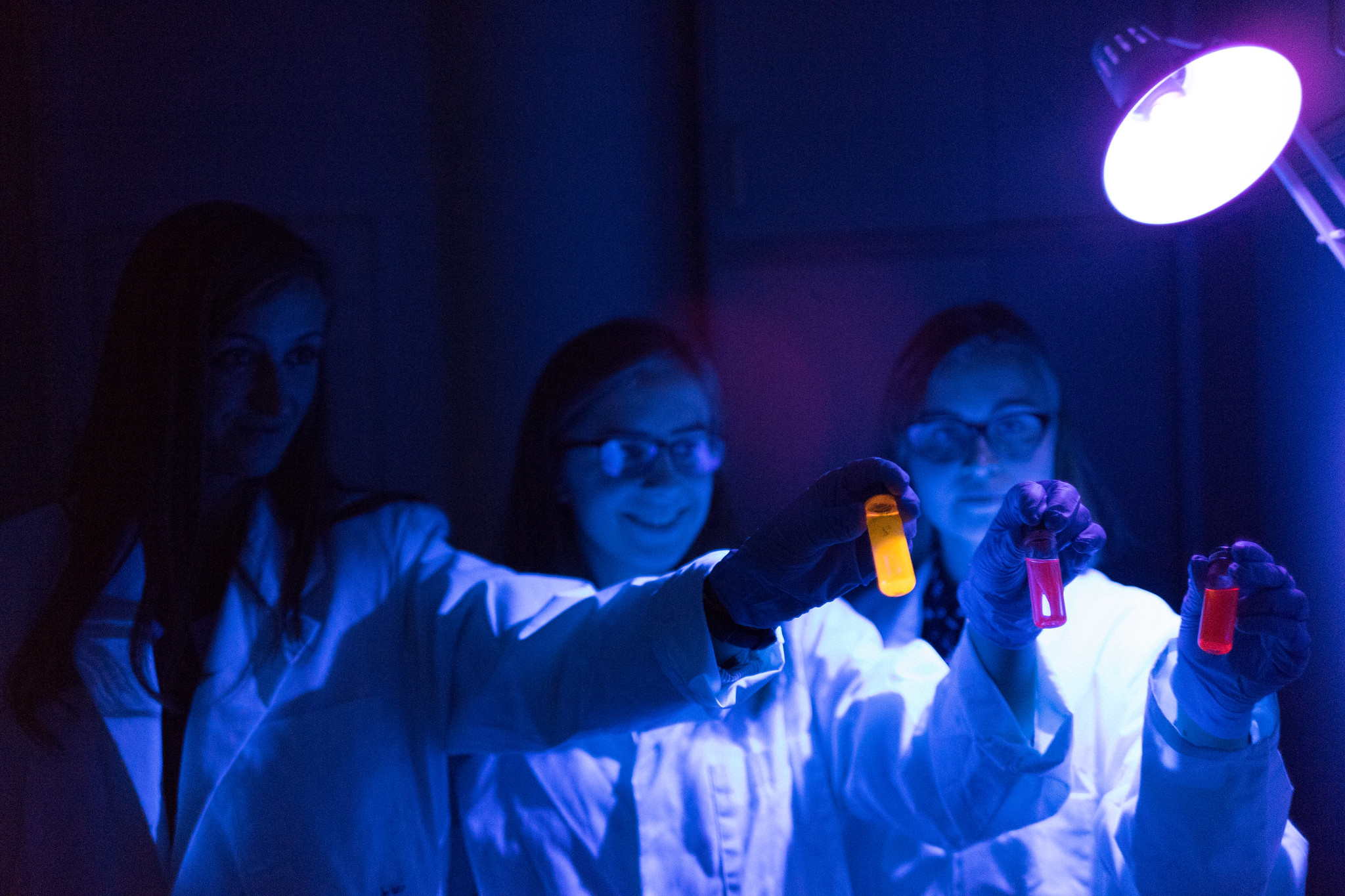“VU Experts Help Understand”: the Nobel Prize in Chemistry Awarded to Three Scientists for the Discovery and Synthesis of Quantum Dots
 Three scientists from the US – Prof. Moungi G. Bawendi, Prof. Louis E. Brus, and Prof. Alexei I. Ekimov – are the recipients of this year’s Nobel Prize in Chemistry. The Royal Swedish Academy of Sciences announced that the prize was awarded for a fundamental discovery in the field of nanotechnology: working independently, Professors A. Ekimov and L. E. Brus developed quantum dots, while Prof. M. G. Bawendi revolutionised their chemical production.
Three scientists from the US – Prof. Moungi G. Bawendi, Prof. Louis E. Brus, and Prof. Alexei I. Ekimov – are the recipients of this year’s Nobel Prize in Chemistry. The Royal Swedish Academy of Sciences announced that the prize was awarded for a fundamental discovery in the field of nanotechnology: working independently, Professors A. Ekimov and L. E. Brus developed quantum dots, while Prof. M. G. Bawendi revolutionised their chemical production.
Monika Baublytė, Laboratory Technician from the Institute of Chemistry at the Faculty of Chemistry and Geosciences of Vilnius University (VU), explains the relevance and benefits of this discovery to society.
‘Quantum dots belong to the realm of quantum chemistry, nanotechnology, and materials chemistry. Quantum chemistry is an interdisciplinary branch of chemistry that applies quantum mechanics – originating from physics – to describe molecular and atomic structures, reactions, and properties. As we know it, quantum mechanics is a physical theory describing the behaviour of very small particles, such as atoms and molecules’, M. Baublytė comments.
She has explained that quantum dots were discovered for the first time back in 1980: ‘Quantum dots are, in fact, small particles of semiconductor material or nanocrystals whose diameter is equal to 2–10 nanometres (10–50 atoms). They have unique electronic properties, somewhere between those of volumetric semiconductors and individual molecules, which are in part a result of the ratio between the extraordinarily large surface of these particles and their volume. The most distinctive property is fluorescence, where nanocrystals can achieve exceptional colours determined by the size of particles: smaller quantum dots emit higher-energy waves and create blue light, while larger dots emit lower-energy waves creating red light.’
The scientist explains that Professors A. I. Ekimov and L. E. Brus researched the systems of quantum dots in different matrices: the former – in glass, the latter – in colloidal systems. Meanwhile, Prof. M. G. Bawendi pioneered in synthesising quantum dots that emit very pure light; he found a way, under controlled conditions, to obtain quantum dots of a pre-determined size.
‘The possibilities for the application of quantum dots are endless: from single-electron transistors, solar cells, light-emitting diodes, lasers, single-photon sources, to quantum computing (quantum computers), cell biology research, microscopy, and medical imaging’, the interlocutor adds.
According to M. Baublytė, the phenomenon of quantum dots also falls within the field of VU research. The application of quantum dots is researched by groups of scientists at the Faculty of Chemistry and Geosciences and the Faculty of Physics.
The Laureates will each receive a gold medal and diploma, and they will share a monetary award of 11 million Swedish kronor (almost 952 thousand euros).